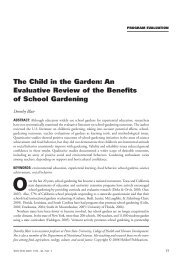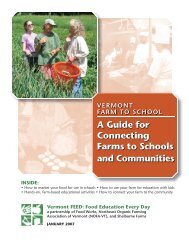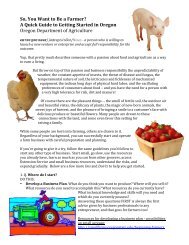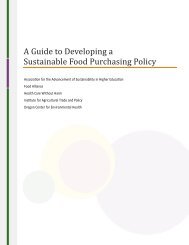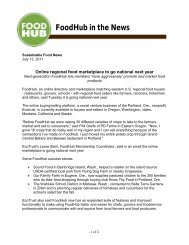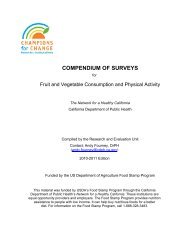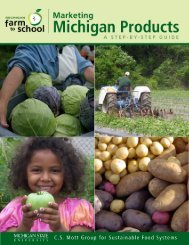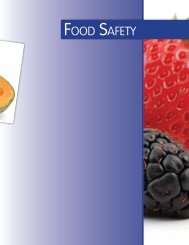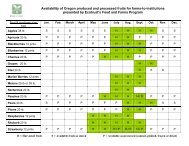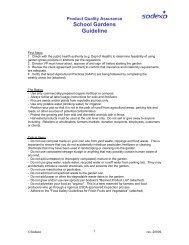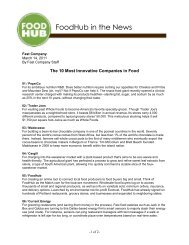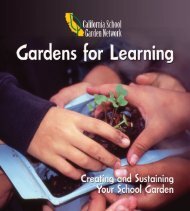eval report cover.indd - New Jersey Farm to School Network Wiki
eval report cover.indd - New Jersey Farm to School Network Wiki
eval report cover.indd - New Jersey Farm to School Network Wiki
Create successful ePaper yourself
Turn your PDF publications into a flip-book with our unique Google optimized e-Paper software.
Resources and Tools for Measuring <strong>Farm</strong> <strong>to</strong> <strong>School</strong> Impact►►►Food frequency questionnairesgather dietary data throughthe completion of a questionnairethat <strong>cover</strong>s foods eatenover a span of time, often manymonths. Th e questionnairemust be culturally specific soas <strong>to</strong> capture foods eaten in theparticipant’s diet.24 hour dietary recall is amethod whereby an interviewerasks a participant <strong>to</strong>remember all food items andquantities consumed within a24-hour period.Screeners are usually shorter survey instruments that focus on certain type(s) offoods in the diet, such as fruits and vegetables, or fiber.Th ese methods have been widely used in nutrition and nutritional epidemiology researchand validation studies have been conducted for many versions of these methods.In the farm <strong>to</strong> school program <strong>eval</strong>uations reviewed for this <strong>report</strong>, other approacheshave been used as a proxy for measuring dietary intake, for example:►►►Digital pho<strong>to</strong>graphs of school meals have been taken and analyzed <strong>to</strong> assesswhat students serve themselves in cafeteria food lines. 15-20 If used along withfood waste data in the cafeteria, these pho<strong>to</strong>graphs can reveal information on anaverage amount of food students consume through the school meal program.Analyses of food production records from the school cafeteria are an indirectmethod used <strong>to</strong> estimate how many servings of a particular product (typicallyfruits and vegetables) every meal produced in the school cafeteria contains. Th ismethod assumes that the amount of product offered on each tray is the amountconsumed by the students.Analysis of meal choices made by students, such as trend data for number ofstudents choosing a farm <strong>to</strong> school salad bar meal versus a hot meal optioncombined with nutrition information per meal served can provide informationon average student dietary intake from the school meal.c) Measures of weight and healthExamples of <strong>to</strong>ols used in assessingstudent dietary behavior (seeappendices p 154-162):Assessing body mass index (BMI) – BMI is a ratio of weight in kilograms divided byheight in meters squared (wt/ht2) <strong>to</strong> measure body fat. BMI measurements are basedon height and weight and require trained staff <strong>to</strong> perform measurements. Some school››››››Diet His<strong>to</strong>ry Questionnaire- National Institutes of Health 2124 Hour Dietary Recall 22Estimation of Fruit and VegetableConsumption by Students Basedon Analysis of <strong>School</strong> FoodService Production Records 20Food Recognition Form 23Nutritionquest Kid’s Questionnaire 24Youth Risk Behavior Survey Fruit andVegetable Consumption Survey 2516 Bearing Fruit: <strong>Farm</strong> <strong>to</strong> <strong>School</strong> Evaluation Resources and Recommendations



